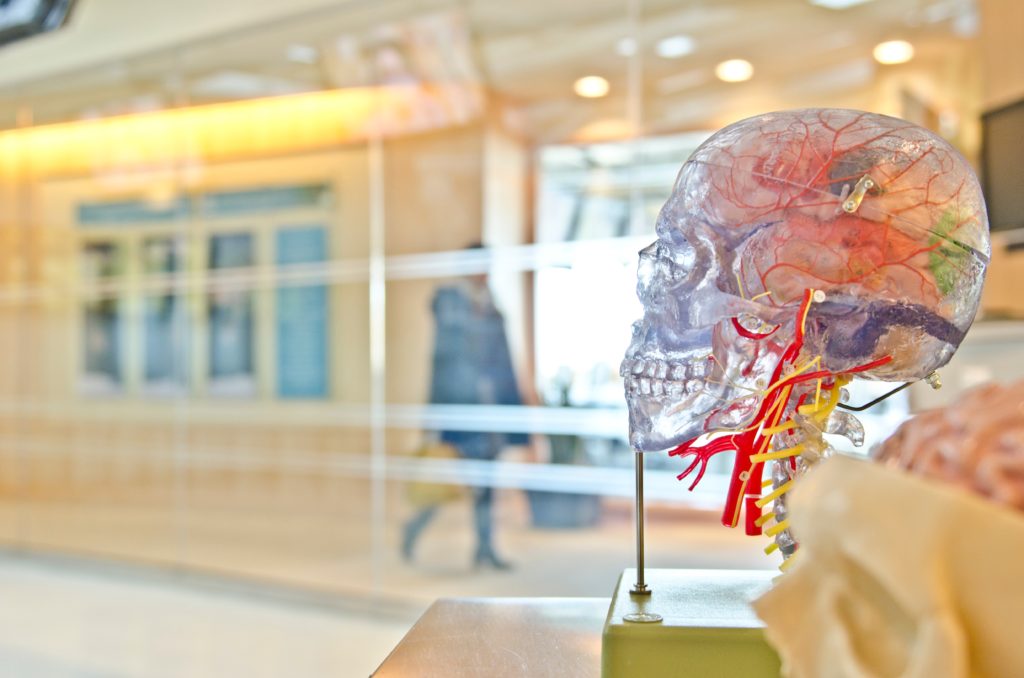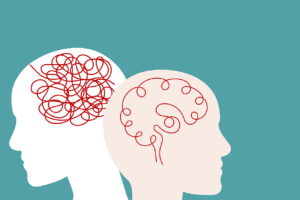
How to rewire your brain
While our blogs cover a range of topics, they all have one common theme: promoting a healthy lifestyle. Even when we know what the right choices to make are, it can be hard to make them. The disconnect between thought and desire to action can be frustrating. It’s hard to make healthy habits stick.
The brain is extremely important in the formation of habits. Habits form because of a three-part loop that causes psychological responses in the brain and is then stored in the basal ganglia.
The basal ganglia are responsible for storing information on reward and punishment as well as the development of our emotions, memories, and pattern recognition.
The three-part pathway
First, there is a cue that triggers the brain to immediately and automatically perform a behavior. Then there is routine, which represents the behavior itself, whatever the habit might be – this is where the routine is performed. Lastly, there is reward where the brain recognizes something it likes and remembers the loop of events for the future.
CUE: A alarm goes off in the morning, sounding its wake-up call, which triggers you to wake up.
ROUTINE: When you hear the alarm, you immediately press the snooze button to get more sleep.
REWARD: The brain likes sleep, so it holds onto the pattern to implement next time the alarm goes off.
Habits, whether good or bad, stick due to the reward processes in the brain. Even if the action is not good for us in the long run, it provides a short term sense of happiness and pleasure, leading the brain to store the process and repeat it when cued.
It’s why we continue to eat the foods we know are not good for us, or why we spend our time watching TV instead of going to the gym. Most of the time, these habits are forming and sticking without us even realizing.
Researchers from MIT have discovered that habits providing immediate rewards are easier to pick up whereas those with delayed rewards are harder to condition. Again, that is why getting to the gym can be so hard. When the pounds aren’t shedding immediately or muscles are not bulking up, the brain does not feel any sense of reward, making the act of exercising that much harder.
Luckily, humans have the power to rewire their own brains, literally.
Self-directed neuroplasticity
Neuroplasticity is the brain’s ability to reorganize itself by forming new neural pathways throughout life and in response to experiences. While the brain usually does this itself in response to injury or disease, when humans focus their attention enough, they can slowly rewire these pathways themselves.
The habit loops are broken by reshaping thinking using mindfulness. Mindfulness refers to focusing attention in a sustained, deliberate way, of looking at the present from a non-judgmental perspective. The goal of mindfulness is to become aware of thoughts, as simply thoughts. Not all unwelcomed or unhelpful thoughts need to be acted on. Once an individual understands that these thoughts are not beneficial for them, they can start to redirect their actions – or the reactions to the thought.
The redirection of thoughts and actions will start to change neural pathways as habits begin to be replaced, and new parts of the brain are used. The brain literally starts to rewire itself with a simple change of mindset.
Breaking habits
Knowing this information does not make breaking habits any less difficult, but it does confirm that the “I can’t do it” mentality isn’t that valid. While trying to break a bad habit can be hard, it is possible!
The first step to changing your habits is to change your cues. If you want to be more mindful, you could leave a journal by your bedside table to remind you to take a few minutes to write and be present either before you fall asleep or when you awake. If you want to start eating healthier, you could put a sticky note on your fridge with an encouraging or inspirational note to remind you to make a healthier choice.
Here is a five-part framework for creating positive habits:
- Discover: Why does your goal matter to you? Why is it important?
- Diagnose: What is blocking you from achieving your goal? Remove that roadblock.
- Prescribe: What steps do you need to take to achieve your goals? Write out a personalized plan that suits your schedule, interests, and skills.
- Practice: Ditch the all-or-nothing mindset. If you mess up or do not stick exactly to plan, that’s okay. Get back on the horse and keep trying. Five minutes of a good habit can eventually build to a half-hour or more!
- Pause: Schedule time to sit and reflect on your efforts, results, and mindset. Reflecting is crucial to building new pathways in the brain.
ABOUT THE AUTHOR
Grace Weintrob is a senior majoring in Communication Studies with a minor in Stage, Sports, and Film Production at CSU. She is currently working as the digital media intern for the Columbine Health Systems Center for Healthy Aging.





